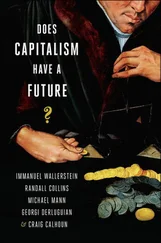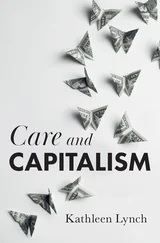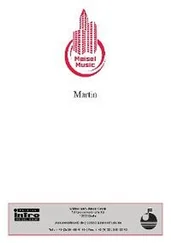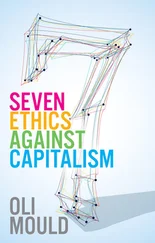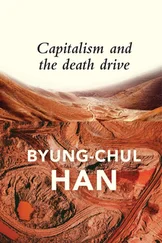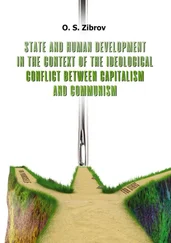One of the features of nonviolence is that it is self-consistent: it incorporates its goals within its means. In other words, nonviolent methods are used to help attain a nonviolent society. Looking at models of a nonviolent society is part of the process of developing and refining this self-consistency.
With a background of method, critique and alternative, it is time to examine strategies. This is the task of chapters 6 to 12. Chapter 6 discusses principles for assessing strategies and proposes a short check list for assessing campaigns, including questions such as “Is the campaign resistant to cooption?” This check list is used in the following chapters to assess a range of actual and possible campaigns.
Chapter 7 examines workers’ struggles, including campaigns for better wages and conditions, for jobs, workers’ control, green bans and whistleblowing. Some campaigns, such as workers’ control, provide a potent challenge to capitalism whereas others do not. It is noted here and later that even if a campaign does not challenge capitalism as a system, it may still be very worthwhile for other reasons.
Chapter 8 looks at sabotage, an approach on the border of nonviolent action. Chapter 9 probes environmental activism, in particular campaigns against pesticides, nuclear power and local developments. Chapter 10 analyses social defence, which is nonviolent community resistance as an alternative to military defence, as a means to undermine capitalism. Chapter 11 addresses three campaigns challenging corporate globalisation: the campaign against the Multilateral Agreement on Investment, the campaign against genetically modified organisms and the development of free software. Chapter 12 assesses several economic alternatives — community exchange schemes, local money systems and voluntary simplicity — as strategies against capitalism.
Chapters 7 through 12 illustrate how to use a check list, developed through a nonviolence analysis, to assess strategies for their potential to challenge capitalism. The assessments given here are not definitive. What is important is for activists to decide on their own check lists and choose their campaigns and methods according to their own goals. Finally, chapter 13 discusses the relation between campaigning and the more subtle process of cultural change.
For many purposes, nonviolence is easier to explain through examples than definitions or theory. [1] . For case studies, see Robert Cooney and Helen Michalowski (eds.), The Power of the People: Active Nonviolence in the United States (Philadelphia: New Society Press, 1987); Ralph E. Crow, Philip Grant and Saad E. Ibrahim (eds.), Arab Nonviolent Political Struggle in the Middle East (Boulder: Lynne Rienner, 1990); Souad R. Dajani, Eyes Without Country: Searching for a Palestinian Strategy of Liberation (Philadelphia: Temple University Press, 1994); Pam McAllister, The River of Courage: Generations of Women’s Resistance and Action (Philadelphia: New Society Press, 1991); Philip McManus and Gerald Schlabach (eds.), Relentless Persistence: Nonviolent Action in Latin America (Philadelphia: New Society Press, 1991); Andrew Rigby, Living the Intifada (London: Zed Books, 1991); Dick Scott, Ask That Mountain: The Story of Parihaka (Auckland: Heinemann Educational Books/Southern Cross Books, 1975); Stephen Zunes, “The role of non-violent action in the downfall of apartheid,” Journal of Modern African Studies, Vol. 37, No. 1, 1999, pp. 137-169.
And what better example than Gandhi’s famous march to Dandi in 1930? India was then under British rule and ruthlessly exploited. The British claimed a monopoly on the manufacture of salt, taxed it and arrested any Indians who made it. Gandhi decided illegal production of salt from sea water would be a good form of civil disobedience. To maximise the impact of this act, he marched with his followers for 24 days on the way to the small coastal village of Dandi, telling about the planned act along the way and picking up hundreds of adherents. By the time the march reached Dandi, it had already served as a powerful organising method. The salt-making and arrests then served to dramatise the injustice of British rule. Similar salt-making civil disobedience actions took place simultaneously across India. [2] . Thomas Weber, On the Salt March: The Historiography of Gandhi’s March to Dandi (New Delhi: HarperCollins, 1997). On Gandhi’s approach to nonviolence more generally, see Mohandas K. Gandhi, An Autobiography or the Story of My Experiments with Truth (Ahmedabad: Navajivan, 1927); Richard B. Gregg, The Power of Nonviolence (New York: Schocken Books, [1935] 1966); Krishnalal Shridharani, War Without Violence: A Study of Gandhi’s Method and its Accomplishments (London: Victor Gollancz, 1939). On the practicalities of nonviolent action, see Howard Clark, Sheryl Crown, Angela McKee and Hugh MacPherson, Preparing for Nonviolent Direct Action (Nottingham: Peace News/CND, 1984); Virginia Coover, Ellen Deacon, Charles Esser and Christopher Moore, Resource Manual for a Living Revolution (Philadelphia: New Society Publishers, 1981); Narayan Desai, Handbook for Satyagraphis: A Manual for Volunteers of Total Revolution (New Delhi: Gandhi Peace Foundation; Philadelphia: Movement for a New Society, 1980); Per Herngren, Path of Resistance: The Practice of Civil Disobedience (Philadelphia: New Society Publishers, 1993); Martin Jelfs, Manual for Action (London: Action Resources Group, 1982).
This sort of organising would not have been possible if the aim was a violent resistance. Openness would not have been possible, either in recruitment, training or action. Participation would have been limited. Finally, violent attacks often have the effect of unifying the opponents and alienating potential supporters. The march to Dandi, in contrast, did far more to undermine support for the British and win sympathy from observers.
The US civil rights movement in the 1950s and 1960s made excellent use of nonviolent action. [3] . Taylor Branch, Parting the Waters: America in the King Years, 1954-1963 (New York: Simon and Schuster, 1988); David Halberstam, The Children (New York: Random House, 1998); Coretta Scott King, My Life with Martin Luther King, Jr. (New York: Holt, Rinehart and Winston, 1969).
In the US South, slaves had been freed in the 1860s but blacks [4] . Terminology has changed. “Negro” was the accepted term at the beginning of the civil rights movement, “black” became standard in the 1960s and more recently “African-American” has been used.
continued to be oppressed by the practice of segregation, with denial of equal opportunity and retribution for those who bucked the system. In 1955 in Montgomery, Alabama, civil rights activist Rosa Parks sat in the white section of a bus, in planned defiance of the segregation laws. After she was arrested, blacks in the city boycotted the buses, many of them walking long distances to work.
The civil rights movement picked up momentum, with additional boycotts, “freedom rides” (blacks and whites on buses together travelling through the South), sit-ins to desegregate lunch counters, marches through segregated cities, road blockades and rallies. The civil rights movement made enormous strides especially through the early 1960s.
The peace movement worldwide has made extensive use of nonviolent action. There is a long tradition of war resistance, namely men refusing to go to war or to be in the army. In war after war there have been men who have gone to prison for refusing military service; in some countries they are persecuted or even killed. Others claim exemption from military service as conscientious objectors or emigrate to avoid conscription.
Many creative actions are used by peace activists to protest against wars, arms production and export, weapons systems and military support for repressive regimes. At Greenham Common in the UK, women protested against the US military base in numerous ways. They maintained a presence for years, held rallies, repeatedly entered the camp (acts of civil disobedience) and sought to win over soldiers and observers.
Читать дальше
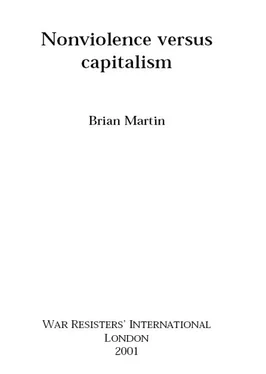
![Brian Jacques - Martin the Warrior [Redwall 6]](/books/128385/brian-jacques-martin-the-warrior-redwall-6-thumb.webp)

